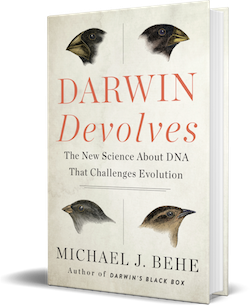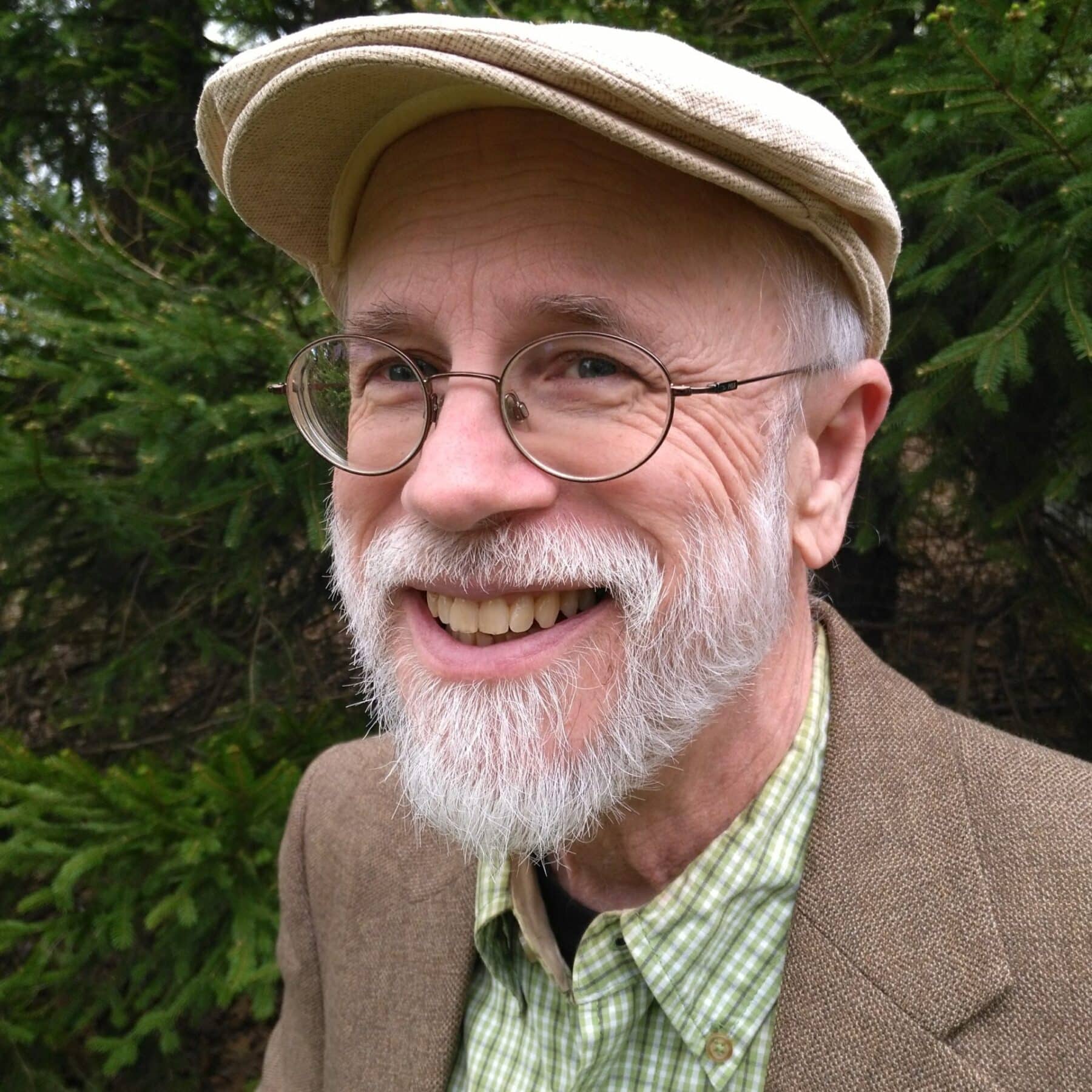 Evolution
Evolution
 Intelligent Design
Intelligent Design
In His Latest Review of Behe’s Darwin Devolves, Nathan Lents Misses the Forest for the Trees


In Nathan Lents’s latest review of Darwin Devolves, published in Skeptic Magazine, the John Jay College biologist reiterates his disagreements with many of Behe’s claims. His criticisms are quite understandable within his evolutionary framework, but his ingrained assumptions cause him to inadvertently make the same errors as do Behe’s other critics. In particular, he misunderstands what Behe actually argues. For instance, Lents asserts the following:
[Behe] claims that random tinkering can never be the source of innovative or even improved biomolecular functioning unless every single step of the way brings clear fitness gains.
However, Behe never makes such a claim. Instead, he argues that the chance of an innovation occurring decreases quickly with the number of required specific alterations. Lents also falsely claims the following:
Behe holds modern evolutionary theory to an impossible standard, declaring it “insufficient” if we cannot pinpoint every point mutation, every intermediate genetic step, in what order, and in which ancient organisms.
To the contrary, Behe holds evolutionary theory to an entirely reasonable standard. The theory assumes that sufficient numbers of mutations capable of driving large-scale transformations have occurred in countless species to allow for the observed diversity of life. Therefore, at least some such “macromutations” should have been identified to justify this claim. Behe demonstrates beyond reasonable doubt that they have not.
Trivial Modifications

In seeking to refute Behe, Lents’s arguments include debatable interpretations of cited literature, hidden assumptions, and a failure to recognize the qualitative differences between the simple adaptations seen in nature (e.g., finch beaks increasing in size) and inferred large-scale transformations (e.g., fish evolving into amphibians). For instance, Lents faults Behe for underreporting the number of beneficial mutations seen in cited studies. However, Lents confuses the selective effects a mutation might confer on an organism with how the mutation alters the gene’s operation. Specifically, he points to mutations that are beneficial in various species, but he fails to fully appreciate the extent to which the benefits might result from damage or only trivial modifications to the genes.
For instance, he marvels at the ability of E. coli to have evolved the capability of importing and metabolizing citrate. He believes this “innovation” represents a dramatic achievement since it required 30,000 generations (15 years) to appear. Unfortunately, he seems completely unaware that another lab demonstrated that this function could evolve in only a few weeks since the required changes were so simple. In addition, the citrate-eating strains developed additional mutations which resulted in the loss of function of several other genes. The net effect was a reduction of information.
Lents’s other purported counterexamples largely represent changes so trivial that they in no way challenge Behe’s thesis that evolutionary processes can only drive modifications at the levels of species and genus but not at the higher taxonomic levels (e.g., order, class, and phylum). For instance, Lents mentions a bacterial species in the genus Sphingomonas which developed the ability to digest the toxic wood preservative pentachlorophenol. Claims about this example resemble those about the enzyme nylonase in that they appear to be another example of the evolutionist who cried “novel complexity.”
Bacteria possess a host of enzymes that are designed to break down a large variety of chemicals. These enzymes are often promiscuous in that they have at least a slight capacity to degrade multiple compounds. As a result, only one or two mutations can dramatically enhance their efficiency for degrading a specific molecule, so they can evolve this ability very easily. In the case of the Sphingomonas species, the capability of breaking down the toxin likely occurred through a few mutations slightly modifying existing enzymes with the latent capacity already present.
In contrast, evolving a complex molecular machine like a bacterial flagellum requires the origination and integration of multiple truly novel proteins. Yet the genesis of even one new protein from its hypothetical ancestor would typically require dozens, if not hundreds, of coordinated mutations. Such a transformation, if undirected, would require timescales vastly longer than the age of the Earth. Leaders in the field of protein evolution have long acknowledged the qualitative differences between slightly modifying an existing protein and generating an entirely novel one. For instance, science journalist Rajendrani Mukhopadhyayover writes:
“Once you have identified an enzyme that has some weak, promiscuous activity for your target reaction, it’s fairly clear that, if you have mutations at random, you can select and improve this activity by several orders of magnitude,” says Dan Tawfik at the Weizmann Institute in Israel. “What we lack is a hypothesis for the earlier stages, where you don’t have this spectrum of enzymatic activities, active sites and folds from which selection can identify starting points. Evolution has this catch-22: Nothing evolves unless it already exists.” [Emphasis added.]
Hidden Assumptions
A second category of Lents’s counterexamples relies almost entirely on hidden assumptions. For instance, he argues that the “multisubunit complex called T-urf13 was cobbled together from various pieces of noncoding DNA in the maize mitochondrial genome.” The problem with this scenario is that it is based solely on genetic similarities, so it has not been proven but simply assumed. Countless examples of such genetic similarities contradict proposed evolutionary trees, so they are often explained as the product of convergence (i.e., evolving independently). Therefore, the proposed explanation for the complex’s origin is hardly conclusive. In fact, several pieces of evidence suggest that a better explanation would be that it resulted from the degradation of a previously existing structure, which would fit with Behe’s First Rule of Adaptive Evolution. (See yesterday’s Evolution News post, “Does T-urf13 Refute Irreducible Complexity? A Response to Arthur Hunt.”)
Similarly, Lents presents the diversity of lemurs in Madagascar as a clear case where evolution has been shown to generate dramatic changes. The different lemur species are believed to have diversified from a single species which appeared on the island in the distant past. This example might support common ancestry — if one ignored the fact that lemurs first appeared on the island after it was separated from Africa by a distance too great for any realistic migration scenario — but the story simply assumes that the diversification occurred through undirected natural processes without actual proof.
Historical Revisionism
In addition, to mask Behe’s true accomplishment, Lents unconsciously engages in historical revisionism. Specifically, he largely acknowledges that Behe is correct in his assessment that the beneficial mutations identified in the research he analyzes either degrade genes or only slightly modify them. However, he argues that those studies are not the best models for the full creative capacity of evolution in nature. What he fails to appreciate is that the cases Behe addresses (e.g., E. coli, finches, and cichlid fishes) have been presented to the public as some of the most compelling pieces of evidence for evolutionary theory in its entirety, including the grand narratives of such transformations as a fish becoming an amphibian. Behe’s analysis so effectively demonstrates the limitations of change for the most iconic examples that Lents now needs to backpedal and argue that the studies are not entirely relevant to the question of large-scale evolution.
This major reversal mimics the manner in which evolutionary algorithms were once presented to the public as undeniable evidence for the creative power of natural selection. That is until Robert Marks, Bill Dembski, and Winston Ewert (MDE) demonstrated that the computer models only produced seemingly creative outputs as a result of the programmers smuggling information into the selective algorithms. Without this assistance, the programs could generate only very limited results, thus further demonstrating the limitations of Darwinian processes. Due to MDE’s analysis, evolutionists were forced to deny that the programs had any relevance to the question of biological evolution.
Missing the Big Picture
Even if one were to accept all of Lents’s claims, he still would not have refuted Behe’s thesis. This is because none of the mutations that Lent’s identifies could ever drive any large-scale transition (e.g., terrestrial dinosaur transitioning into a bird). For true macroevolution requires genetic and other changes that are qualitatively different from slightly modifying a gene.
Specifically, they must significantly alter the developmental process of an egg (or the equivalent) transforming into an adult. The reason is that in development the foundational architecture (design logic) is laid out and the core structures (e.g., organs, circulatory system, central nervous system) are constructed. As an analogy, one could make numerous minor changes to a home such as rearranging the furniture, changing the carpet, or even installing a new cuckoo clock. But such alterations could never transform a townhouse into a shopping mall or into a cathedral. The required changes would have to be implemented during the construction of the building which is analogous to an organism’s development. However, no developmental mutation with such transformative capacities (not involving the loss/reduction of a structure) has ever been identified that is not harmful.
This observation leads to the following key question: If the standard evolutionary model were true, how many such macromutations should we expect? As an estimate, we could assume that a major transformation would require more than 1,000 mutations which produce significant alterations within a period of 10 million years. Examples would include mutations that perform the following:
- Dramatically alter the structure or relative position of an organ.
- Establish a new hardwired neural connection in an animal’s brain which could contribute to some new capability (e.g., echo location).
- Alter the three-dimensional shape of a bone or how it interconnects with other bones (e.g., contribute to evolution of mammal ear ossicles).
- Help generate a new cell type such as neural crest cells.
The stated estimates are highly conservative since more than a 1,000 mutations would be required simply to construct the lens of a camera-like eye, and entirely new phyla appeared in the Cambrian explosion within a few million years.
A critical factor in any calculation of expected numbers is that evolutionists now increasingly believe that major adaptations are driven by neutral mutations. The probability of a neutral mutation spreading throughout a population (reach fixation) instead of eventually disappearing is 1/(2N), where N is the population size. If we assume a population in the tens of thousands, then a neutral mutation would have to appear tens of thousands of times before one would reach fixation. The number of macromutations required for a major transformation would then be larger than 1,000 times 10,000 in a period of 10 million years which equates to greater than one mutation per year. Given that millions of species exist on Earth today, we should see macromutations appearing in nature nearly every day.
In addition, a neutral mutation requires on average 4Ne generations to spread throughout a population, where Ne is the effective population size. As a consequence, mutations that occurred tens of thousands of years in the past, and often much longer ago, should still be in the process of spreading throughout a population. Therefore, billions of macromutations should be contributing to the genetic variation in large numbers of species. Yet, scientists have not identified any. This paradox has been known for over thirty years. As far back as 1983 geneticist John McDonald commented:
Those loci [locations in DNA] that are obviously variable within natural populations do not seem to lie at the basis of many major adaptive changes, while those loci that seemingly do constitute the foundation of many, if not most, major adaptive changes apparently are not variable within natural populations.
As a result, Behe’s thesis has clearly been empirically confirmed. Unfortunately, many biologists’ unquestioning faith in the evolutionary creation narrative forces them simply to ignore the most relevant evidence and focus on data that is largely inconsequential to the question of generating complex innovations.

